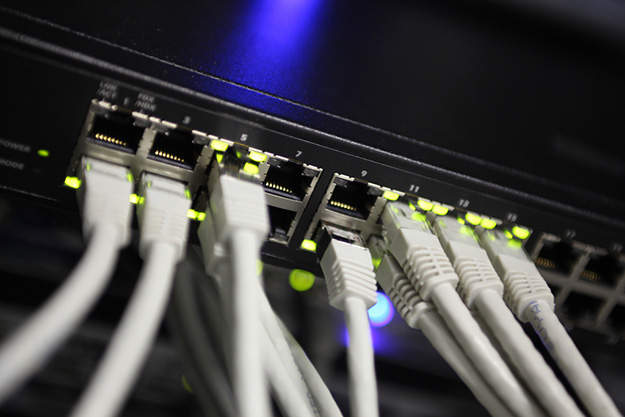Microsoft To Announce $10B Initiative To Bring Broadband Internet To Rural America
One of the biggest challenges that major technology firms have committed to solving is extending broadband Internet service into remote areas. Facebook and Google are both actively involved in connecting the world, and now Microsoft is joining the fray with a unique solution. What Microsoft wants to do is utilize the unused channels between television broadcasts—these are known as white spaces—to bring online broadband connectivity to rural spots in America.
Microsoft's effort is part of a $10 billion program to close the broadband gap. Fittingly enough, the Redmond outfit announced its massive investment at an event at the Willard Hotel in Washington, the same place Alexander Graham Bell demonstrated the first ever transcontinental telephone call over 100 years ago. Now a century later Microsoft is trying to connect the country, but in a different way.
The plan is to roll out a white-spaces broadband service in a dozen states, some of which in include Arizona, Kansas, New York, and Virginia. If all goes to plan, Microsoft's initiative will connect two million Americans with limited or no broadband service in rural areas within the next five years.
This is not the first time the idea of using white spaces has come up. It has been tested by Microsoft and other companies for around a decade. Also known as super Wi-Fi, white spaces are low-powered television channels that can travel much farther than wireless hot spots. White spaces are also better at traveling through obstacles than cellular signals. However, there are challenges Microsoft will have to overcome.
One of the potential roadblocks is ensuring that Microsoft is allowed to use the necessary white spaces to deliver broadband to rural areas. At present, Microsoft is in discussions with federal and local regulators to ensure that it can before the company goes and dumps a bunch of money into the effort.
The other challenge is bringing down the cost of compatible devices. Some of the current devices that can use white spaces technology cost upwards of $1,000, making them cost prohibitive for many people who could benefit from this initiative.

"White spaces has tremendous opportunity to help with broadband coverage in rural areas, but it’s hard to justify the cost to device makers who don’t see economies of scale in rural areas," said Doug Brake, a senior analyst at the Information Technology & Innovation Foundation, told The New York Times.
Microsoft apparently has a solution in play. Company president Brad Smith said he plans to showcase four devices compatible with white spaces, each of which he says will drop below $200 by next year. That is about the cost of a higher-end wireless router.
Not everyone is on board with what Microsoft is doing. Television broadcasters in particular are fearful that devices tapping into white spaces will interfere with neighboring channels. Patrick McFadden, an associate general counsel for the National Association of Broadcasters, filed his concerns with the Federal Communications Commission. McFadden points out that Microsoft has been "making promises" related to white spaces technology for nearly 10 years, and said it is time to conclude the "white spaces project is a bust."
Microsoft's effort is part of a $10 billion program to close the broadband gap. Fittingly enough, the Redmond outfit announced its massive investment at an event at the Willard Hotel in Washington, the same place Alexander Graham Bell demonstrated the first ever transcontinental telephone call over 100 years ago. Now a century later Microsoft is trying to connect the country, but in a different way.
The plan is to roll out a white-spaces broadband service in a dozen states, some of which in include Arizona, Kansas, New York, and Virginia. If all goes to plan, Microsoft's initiative will connect two million Americans with limited or no broadband service in rural areas within the next five years.
This is not the first time the idea of using white spaces has come up. It has been tested by Microsoft and other companies for around a decade. Also known as super Wi-Fi, white spaces are low-powered television channels that can travel much farther than wireless hot spots. White spaces are also better at traveling through obstacles than cellular signals. However, there are challenges Microsoft will have to overcome.
One of the potential roadblocks is ensuring that Microsoft is allowed to use the necessary white spaces to deliver broadband to rural areas. At present, Microsoft is in discussions with federal and local regulators to ensure that it can before the company goes and dumps a bunch of money into the effort.
The other challenge is bringing down the cost of compatible devices. Some of the current devices that can use white spaces technology cost upwards of $1,000, making them cost prohibitive for many people who could benefit from this initiative.

"White spaces has tremendous opportunity to help with broadband coverage in rural areas, but it’s hard to justify the cost to device makers who don’t see economies of scale in rural areas," said Doug Brake, a senior analyst at the Information Technology & Innovation Foundation, told The New York Times.
Microsoft apparently has a solution in play. Company president Brad Smith said he plans to showcase four devices compatible with white spaces, each of which he says will drop below $200 by next year. That is about the cost of a higher-end wireless router.
Not everyone is on board with what Microsoft is doing. Television broadcasters in particular are fearful that devices tapping into white spaces will interfere with neighboring channels. Patrick McFadden, an associate general counsel for the National Association of Broadcasters, filed his concerns with the Federal Communications Commission. McFadden points out that Microsoft has been "making promises" related to white spaces technology for nearly 10 years, and said it is time to conclude the "white spaces project is a bust."


